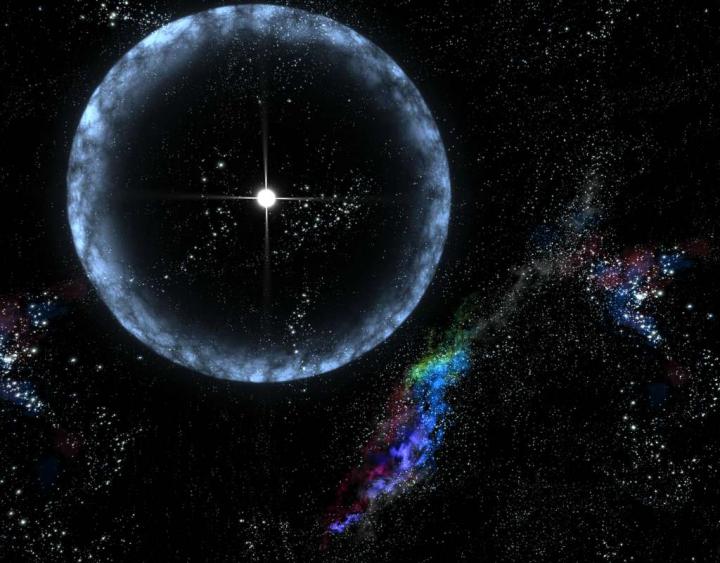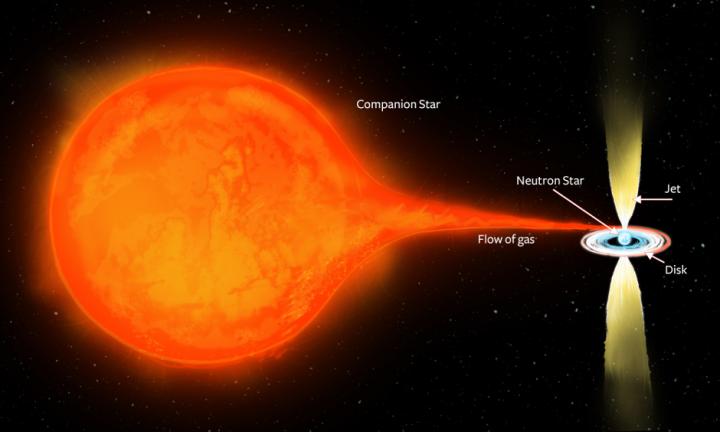The sun is the most powerful object in our neighborhood. Its nuclear furnace creates blistering heat and blinding light. Magnetism and magnetic fields plays no role in the process which creates the Sun’s energy. That’s how it always appeared.
Not any more. During the past few years researchers have found that there are stars with extremely powerful magnetic fields. They are neutron stars which are the smallest, most compact starts in the universe, created by the collapse of massive stars after a supernova.

An artist’s impression of a supernova explosion, leaving a tiny, compact neuron star.
Already among the all-time strangest objects, neutron stars can be wrapped in magnetic fields brawny enough to affect the rest of the universe.
The first hint of magnetic trouble came on March 5, 1979 when a burst of gamma rays swept through our solar system at the speed of light. Radiation monitors aboard spacecraft near Venus and Earth suddenly went off-scale. The deadly torrent lasted for only 1/5 of a second, but in that eyeblink some mysterious object had given off twice the energy the sun has emitted since the pyramids were built. Eventually the culprit was narrowed down to an invisible neutron star in a neighbor galaxy.
All that power from a tiny neutron star, a dead ex-sun that doesn’t even boast a nuclear generator? Maybe we needed to take another look at them.
Neutron stars are so tiny that you could easily fit one between two exits on the Freeway. They’re the only stars with a solid surface. This material is hyperpacked: Each apple-seed sized speck outweighs a freight train loaded with iron ore.
They’re weird, all right, but what’s new about all this is that for a brief period in a neutron stars’ youth, its magnetic field can become a million billion times greater than a refrigerator magnet. Such stars are catchily called magnetars.

In this artist rendering, the powerful gravity of a neutron star is pulling gas from a larger star.
More bursts arrived since that first eye-opener. The biggest came on December 27, 2004, and that time the gamma rays were strong enough to damage atoms in our own atmosphere. Then another swept past Earth a few years ago, from yet another direction.
Altogether, a dozen magnetars have now been discovered. However, over a million others are thought to loiter unseen in the dusty hallways of the Milky Way. Magnetars embody extremes. Extremes of density, gravity, radiation, and magnetism.
It’s good that none are nearby.











